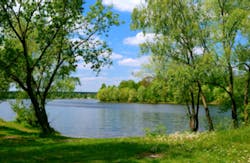WASHINGTON — The U.S. Environmental Protection Agency (EPA) released an enhanced version of “How’s My Waterway,” an app and website to help people find information on the condition of thousands of lakes, rivers and streams across the United States from their smart phone, tablet or desktop computer, according to a press release.
The How’s My Waterway app and website, http://www.epa.gov/mywaterway, uses GPS technology or a user-entered zip code or city name to provide information about the quality of local water bodies, noted the release.
The new version of the site includes data on local drinking water sources, watersheds and efforts to protect waterways, the release reported, as well as a map-oriented version of “How’s My Waterway” designed for museum kiosks, displays and touch screens, available at: http://watersgeo.epa.gov/mywaterway/kiosk/.
“Communities and neighborhoods across the U.S. want to know that their local lakes, rivers and streams are healthy and safe to enjoy with their families, and providing that information is a priority for EPA,” said acting assistant administrator for EPA’s Office of Water Nancy Stoner. “The enhanced version of ‘How’s My Waterway’ provides easy, user-friendly access to the health of the places we swim, fish and boat, where we get our drinking water and what is being done to curb water pollution. People can get this information whether researching at a desktop or standing streamside looking at a smart phone.”
According to the release, the enhanced version includes new data and improvements based on user feedback to the original site, including localized information on: The waterways that supply drinking water to communities, the health of watersheds and organizations working to protect watersheds, permits that limit pollutant discharge into waterways and efforts to restore waterways to protect and improve fish habitats by the National Fish Habitat Partnerships.
Read the full release here.
